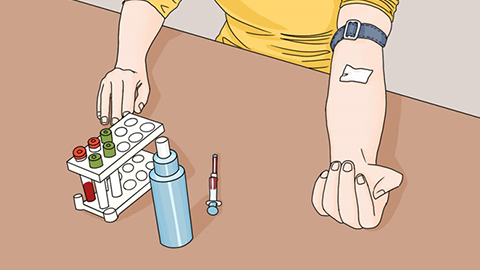Why does whooping cough cause an increase in white blood cells?
Generally, elevated white blood cell count caused by pertussis may be due to factors such as the body's immune response, bacterial toxin stimulation, secondary bronchitis, secondary pneumonia, or concurrent acute tonsillitis. It is recommended to seek timely medical attention, identify the underlying cause, and receive symptomatic treatment under a doctor's guidance. Detailed analysis is as follows:

1. Immune Response: After the invasion of Bordetella pertussis, the body's immune system is activated, leading to increased white blood cell production in the bone marrow as immune cells combat the bacteria, resulting in elevated white blood cell count, primarily lymphocytes. This is a normal defense reaction. During illness, ensure adequate rest and intake of high-protein foods to enhance immunity and promote immune cell function. No special treatment for elevated white blood cells is needed; the focus should be on treating the underlying disease.
2. Bacterial Toxin Stimulation: Bordetella pertussis releases toxins that stimulate bone marrow hematopoietic function, promoting the release of white blood cells into the bloodstream, causing elevated white blood cell count. The stronger the toxin, the more pronounced the elevation, often accompanied by severe cough and spasmodic coughing. Follow medical advice to promptly use antibiotics to inhibit bacterial proliferation and reduce toxin production. Drinking plenty of water helps eliminate toxins and reduce bone marrow stimulation.
3. Secondary Bronchitis: If pertussis is not controlled timely, bacteria may spread to the bronchi, causing inflammation. This inflammatory stimulation further elevates white blood cell count, accompanied by worsening cough, sputum production, and bronchial rales upon auscultation. Patients should avoid getting chilled, maintain humid indoor air, and follow medical advice to use medications such as azithromycin dry suspension, children's expectorant and cough-relieving granules, and ambroxol hydrochloride oral solution to combat infection, relieve cough, and reduce phlegm, thereby controlling bronchial inflammation and lowering white blood cell levels.
4. Secondary Pneumonia: Pertussis complicated by pulmonary infection leads to expanded inflammation and a significant increase in white blood cell count, primarily neutrophils, accompanied by high fever, dyspnea, purulent sputum, and chest X-ray findings of pulmonary inflammatory infiltration shadows. Patients should rest in bed and receive oxygen to relieve hypoxia. Follow medical advice to use potent anti-infective drugs such as penicillin sodium for injection, ceftriaxone sodium injection, and levofloxacin sodium chloride injection. Nebulization therapy can help dilute sputum, promote its expulsion, and alleviate pulmonary inflammation.
5. Concurrent Acute Tonsillitis: During pertussis, the immune system is weakened, making the tonsils susceptible to bacterial infection and resulting in acute inflammation, which elevates white blood cell count. Symptoms include sore throat, swollen tonsils, and difficulty swallowing, with physical examination revealing congested and purulent tonsils. Patients should follow a bland diet and avoid spicy or irritating foods. Follow medical advice to use medications such as amoxicillin-clavulanate potassium tablets, Pudi Lan Xiao Yan oral liquid, and Kehou Jian spray to combat infection, reduce swelling and pain, control tonsillar inflammation, and normalize white blood cell count.
In daily life, proper isolation should be practiced to prevent the spread of pertussis to others, especially ensuring children receive the DTP vaccine according to schedule to prevent disease onset. During illness, maintain balanced nutrition, consume more fresh fruits and vegetables for vitamin supplementation, and enhance the body's resistance. Closely monitor body temperature, cough symptoms, and changes in white blood cell count, adjust treatment plans timely, and promote recovery.




